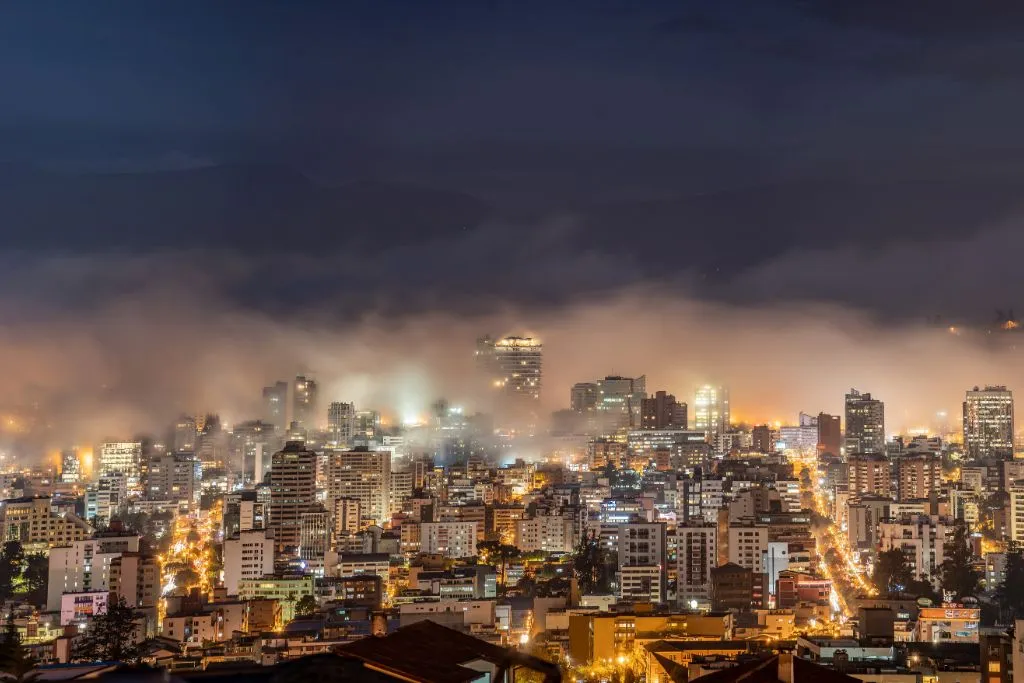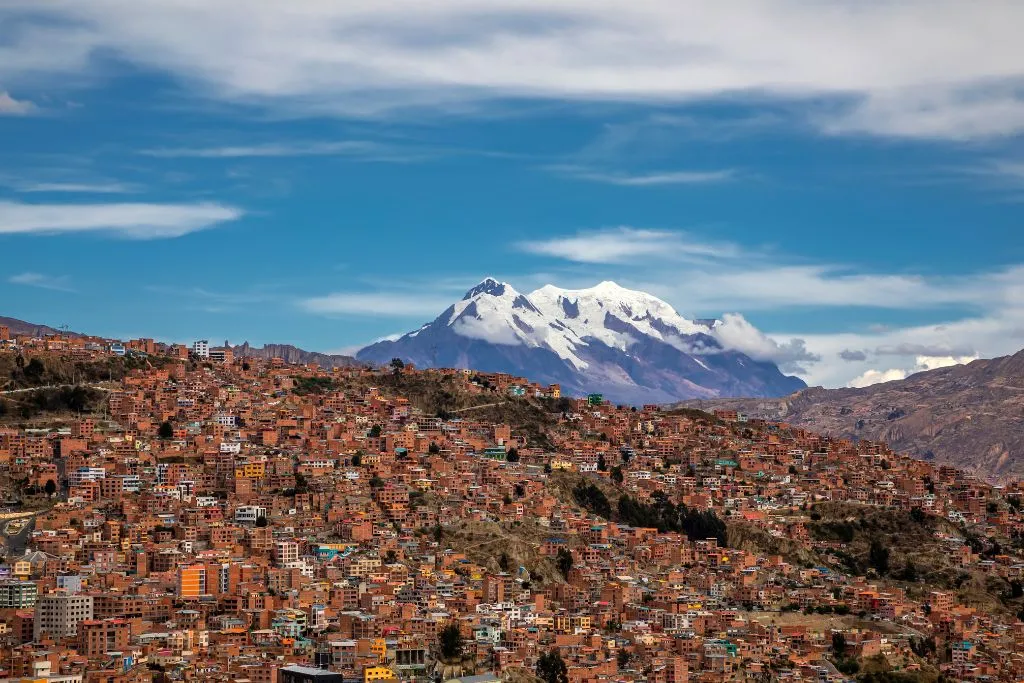What Is The Elevation In Quito?
Quito Elevation: Unveiling the Heights of Ecuador’s Capital
The elevation of Quito is 2,850 meters (9,350 feet) high above sea level. I thought this was crazy when I first learned this fact, but being up that high makes me enjoy the climate even more!
What Is Quito’s Elevation?
Quito, Ecuador, a city situated high in the Andes Mountains, boasts an average elevation of 9,350 feet (2,850 meters). This lofty position places it significantly higher than many well-known cities, creating a unique environment and lifestyle. Its location within the Andean highlands directly influences its climate, air pressure, and the daily experiences of its residents. The city’s topography, with its dramatic slopes and valleys, further contributes to localized variations in elevation, adding to the city’s diverse microclimates and scenic beauty. The geological forces that shaped the Andes Mountains are responsible for Quito’s high altitude, making it a place where the earth’s raw power is palpable.
Pictured Above: A large geological “rock” formation.
Quito vs. Other High-Altitude Cities

To truly grasp Quito’s elevation, let’s compare it to other high-altitude cities around the world. La Paz, Bolivia, another Andean city, sits at an even higher elevation, exceeding 11,900 feet. Bogota, Colombia, also nestled in the Andes, reaches around 8,600 feet. In the United States, Denver, Colorado, known as the “Mile High City,” is at approximately 5,280 feet, significantly lower than Quito. Calgary, Canada, while situated in the foothills of the Rockies, has an elevation of around 3,400 feet. Each of these cities has adapted to its unique altitude, developing distinct cultures and lifestyles influenced by the environment. In Quito, the constant presence of the Andes creates a sense of awe and connection to nature.
Visual Comparisons Of Quito’s Elevation
To make it even more relatable, consider these comparisons to iconic structures: Quito’s elevation is roughly three times the height of the Eiffel Tower, nearly twice the height of the Empire State Building, and almost 1.5 times the height of the Burj Khalifa. These comparisons help visualize the sheer altitude of Quito and provide a tangible sense of its height. Imagine stacking those famous structures on top of each other – Quito’s elevation would still tower above them. These comparisons underscore the extraordinary nature of living at such a high altitude.
Is Quito the Highest Capital City?

While Quito is exceptionally high, it’s not the highest capital city in the world. La Paz, Bolivia, holds that record. However, Quito remains one of the highest, contributing to its unique character and appeal. The city’s blend of historical charm and modern vibrancy is enhanced by its high-altitude setting, creating a captivating destination for travelers. The cultural adaptation to high altitude has also shaped local traditions and practices, making Quito a fascinating place to explore.
Altitude Sickness in Quito: What Travelers Need to Know
Many travelers wonder, “Can you get altitude sickness in Quito?” The short answer is that while you may not experience full-blown altitude sickness, you’ll likely notice the effects of thinner air. With roughly 25% less oxygen available per breath compared to sea level, you might find yourself getting out of breath more easily, especially during physical activity. This is a normal physiological response, and most people adjust within a few days. Staying hydrated, avoiding alcohol, and taking it easy upon arrival can help mitigate these effects.
My Personal Experience With High Altitude In Quito
From my personal experience, having spent months in Quito, climbed Cotopaxi (which is significantly higher), and taken the Teleferico multiple times, I didn’t experience altitude sickness. However, it’s crucial to remember that everyone’s body reacts differently. Some people might feel the effects at lower elevations than others. Listening to your body and taking appropriate precautions are essential for a comfortable visit. For example, local markets often sell coca tea, a traditional remedy that many find helpful for acclimating to the altitude.
Recognizing Altitude Sickness Symptoms:
If you suspect you’re experiencing altitude sickness, watch for these symptoms:
- Headache: Often the first sign, ranging from mild to severe.
- Nausea or vomiting: Can occur even with mild exertion.
- Dizziness or lightheadedness: A result of reduced oxygen to the brain.
- Fatigue or weakness: Feeling unusually tired even after rest.
- Shortness of breath: Difficulty breathing, especially during activity.
- Difficulty sleeping: Insomnia or restless sleep.
If you experience these symptoms, it’s essential to rest, drink plenty of water, and avoid strenuous activity. If symptoms worsen, seek medical advice. Local pharmacies and clinics are well-equipped to assist travelers with altitude-related concerns.
Quito’s Elevation: A Tourist Attraction
Quito’s high elevation is a significant draw for tourists. The city offers breathtaking panoramic views of the surrounding Andes Mountains and volcanoes. Opportunities for hiking, mountain climbing, and exploring high-altitude landscapes abound. The Teleferico, a cable car that ascends to over 13,000 feet, provides stunning views and is a popular attraction. Additionally, the surrounding national parks, such as Cotopaxi National Park, offer unparalleled opportunities for adventure and exploration. The unique flora and fauna of the high-altitude environment also attract nature enthusiasts.
Other High-Altitude Cities in Ecuador
Ecuador boasts several other high-altitude cities, each with its unique charm:
- Cuenca: Approximately 8,392 feet (2,558 meters) – Known for its colonial architecture and cultural heritage.
- Loja: Approximately 7,218 feet (2,200 meters) – A city with a rich musical tradition and vibrant arts scene.
- Riobamba: Approximately 9,022 feet (2,750 meters) – Situated near several volcanoes, offering stunning natural landscapes.
- Ibarra: Approximately 7,349 feet (2,240 meters) – Known as the “White City” for its whitewashed buildings and serene atmosphere.
- Ambato: Approximately 8,448 feet (2,575 meters) – Famous for its fruit and flower production, and the annual Fruit and Flower Festival.
- Latacunga: Approximately 9,055 feet (2,760 meters) – A historic city with a rich cultural heritage and proximity to Cotopaxi.
- Tulcán: Approximately 9,613 feet (2,930 meters) – A city near the Colombian border, known for its unique cemetery topiary.
These cities offer a diverse range of experiences, from cultural immersion to outdoor adventures, all within the stunning backdrop of the Ecuadorian Andes.
Quito Elevation: Frequently Asked Questions
Is Quito higher than Denver?
Quito is much higher than Denver. This South American city is 1,206 meters or approximately 4,000 feet higher than the “Mile High City”.
Quito elevation: 2,815 meters or 9,236 feet.
Denver elevation: 1,609 meters or 5,280 feet.